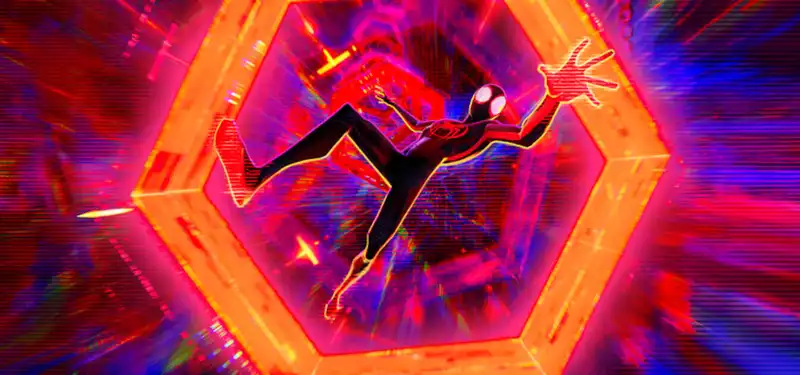Jun 23, 2023
-Across the Spider-Verse" Artists Express Concerns About Unsustainable Work Environment
Sony's latest animated "Spider-Man" film has been well received by critics and fans alike, breaking the $500 million mark at the box office this week. However, all is not well in the Spider-Verse, according to a quartet of artists involved in the recent Spider sequel.
In an extensive report published by Vulture, the four anonymous artists (I use pseudonyms in this piece) outline a work culture that they believe is unsustainable, which has led more than 100 artists to quit their jobs mid-production.
Those interviewed by Vulture were particularly critical of Phil Lord's management style, claiming that he is not good at conceptualizing 3D animations. They also said that he demands rewrites and revisions of fully rendered work right up to the end of production. Interestingly, Lord's longtime colleague and creative partner, Chris Miller, escaped criticism in the article. According to the article, Lord was deeply involved in the production of the film, often overriding the decisions of the film's three directors, Joaquim Dos Santos, Kemp Powers, and Justin K. Thompson, but Miller's name did not appear much in the studio until the last few months of production.
According to the artists, in 2021, many workers were forced to sit idly by for three to six months while Lord worked on the layout phase of the film. This downtime meant that when production resumed, there was a huge backlog that amounted to more than 70 hours of work per week for the crew.
One of the animators said that these problems pushed the original release date of "Across the Spider-Verse," October 2022, back to June of this year, rather than the coveted date as was first reported. The artist also claimed that "Beyond the Spider-Verse" would not be ready for its currently scheduled March 29 release.
Regarding the production delays, "Charlie" said:
The biggest problem is the script. Phil didn't know what he wanted. Maybe he has a hard time making up his mind. In addition to Phil being all over the place and not being able to make up his mind about the story, another big problem is that he can't visualize the layout. Even if he has a 3D layout in front of him, he probably can't visualize what happens afterwards. This is kind of a problem when working with 3D animation.
In other words, Lord preferred to edit fully rendered sequences. Crews said this often led to requests for changes to already approved animation sequences.
"Eliott" said that the delays had a demoralizing effect on the crew:
We were "idle." Some of us flew to Vancouver, rented an apartment for the film, and then sat on our hands for the next three months. The worst thing an artist can do is hire you and then do nothing.
It wasn't just the delay in production that negatively affected the artists."
"Steven" describes the mental strain of having to redo finished shots over and over:
I think it's a genuinely good film. But having said that, a lot of the artists involved have been debilitated. Morale has declined incredibly, and many people have reassessed whether or not they even want to be part of this film. It is very stressful and absolutely affects people's lives, sleep schedules, energy levels, and burnout.
According to Sony, over 1,000 artists worked on the film." Steven" explained that he wonders why so many stayed on despite the poor conditions:
Many stayed on so that their work would survive to the end. I know people who were involved in this project for over a year.
"Charlie" had a similar theory. The hardest thing for an animator is not working 11 hours a day, 70 hours a week. The hardest thing for an animator is not working 11 hours a day, 70 hours a week, but the frustration of wasted work and being changed or thrown away after spending that much time
"Nathan" also asked how Sony brought in for the film He criticized how Sony compensated the new artists who were brought in:
Sony paid them less with the promise that overtime would boost their income to the level it should have been.
It is important to note that Sony Pictures Imageworks (SPI), the studio responsible for the actual animation of Across the Spider-Verse, operates as an independent contractor under contract to Sony Pictures Animation, and SPI is a union that it is not a studio. SPI's wage structure caused a stir in May when the company launched a new studio in Montreal and posted openings for animators, compositors, and writers.
Sony representatives also spoke to Vulture to defend the production of Across the Spider-Verse. Michelle Grady, executive vice president and general manager of Sony Pictures Imageworks, said that the four artists who chose to speak did not represent most of the people involved in the film, and that the artists were asked to correct She stated that the number of times they were asked to make corrections was not the norm." That really happens with every film. It can be really, honestly, a little frustrating, but I always try to explain to them that this is a process."
Amy Pascal, former chairman of Sony Pictures Entertainment and producer of "Spider-Verse 1" and "Spider-Verse 2," defended Lord's management style, stating, "I think it's a good thing. If the story isn't right, you have to keep going until it is."
Pascal's response to a worker who felt demotivated after having to revise the final rendering so many times may not have resonated with the artists. Welcome to filmmaking," she told Vulture."
.



Post your comment